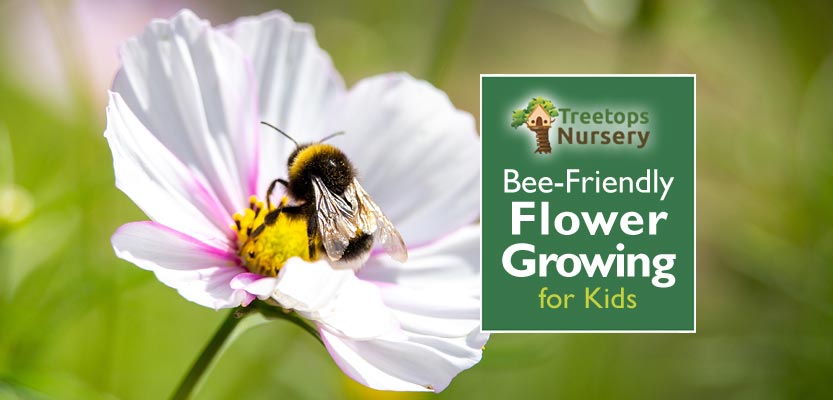
 Today, we follow up last month’s wildlife attracting guide for Under-5s with another, more specific, activity for children to undertake outdoors. This time, we outline easy-to-accomplish flower growing activities that children can enjoy, to attract bees and other friendly insects to the garden. While flowering plants can be purchased commercially ready-grown, we’ll concentrate today on ways children can grow wildlife-friendly flowers themselves, from seed. After all, it’s far cheaper, much more fun as an activity, teaches children more about nature and will also give them a greater sense of achievement. If it all goes well, the result will be some pretty flowers to brighten the place up as well as a host of charming and beautiful little creatures visiting. Children may get to see different types of bee perhaps along with butterflies, hover flies, ladybirds and probably many more wonderful creatures that might otherwise never have visited. Children will generally find flowers, bees and butterflies not only beautiful to look at, but also fascinating once they really start to look closely. After all, what’s not to love about stunning flowers and the cute, colourful pollinators that will visit them!
Today, we follow up last month’s wildlife attracting guide for Under-5s with another, more specific, activity for children to undertake outdoors. This time, we outline easy-to-accomplish flower growing activities that children can enjoy, to attract bees and other friendly insects to the garden. While flowering plants can be purchased commercially ready-grown, we’ll concentrate today on ways children can grow wildlife-friendly flowers themselves, from seed. After all, it’s far cheaper, much more fun as an activity, teaches children more about nature and will also give them a greater sense of achievement. If it all goes well, the result will be some pretty flowers to brighten the place up as well as a host of charming and beautiful little creatures visiting. Children may get to see different types of bee perhaps along with butterflies, hover flies, ladybirds and probably many more wonderful creatures that might otherwise never have visited. Children will generally find flowers, bees and butterflies not only beautiful to look at, but also fascinating once they really start to look closely. After all, what’s not to love about stunning flowers and the cute, colourful pollinators that will visit them!
Sourcing Bee-Friendly Seeds
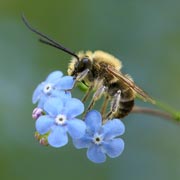 Parents/guardians of under-fives will need to supervise which seeds to buy — or to harvest free of charge at the end of a previous season. If purchased, they’re inexpensive with seed packets typically costing as little as £1.99 from places like Suttons, garden centres and even online from some supermarkets. Look out for seeds that are marked as suitable for growing bee-friendly and/or butterfly-friendly flowers, or are simply suitable for pollinators. Typical examples include seeds for poppies, sunflowers, forget-me-nots, sedum, buddleia, nasturtium, daisies, cornflower, cosmos and calendula. Even herbs will grow fragrant flowers that’ll attract pollinators if you allow them to grow to maturity. Good examples include mint, basil and thyme, any of which would serve a secondary purpose of being useful to eat — another useful and educational benefit of this activity for young children.
Parents/guardians of under-fives will need to supervise which seeds to buy — or to harvest free of charge at the end of a previous season. If purchased, they’re inexpensive with seed packets typically costing as little as £1.99 from places like Suttons, garden centres and even online from some supermarkets. Look out for seeds that are marked as suitable for growing bee-friendly and/or butterfly-friendly flowers, or are simply suitable for pollinators. Typical examples include seeds for poppies, sunflowers, forget-me-nots, sedum, buddleia, nasturtium, daisies, cornflower, cosmos and calendula. Even herbs will grow fragrant flowers that’ll attract pollinators if you allow them to grow to maturity. Good examples include mint, basil and thyme, any of which would serve a secondary purpose of being useful to eat — another useful and educational benefit of this activity for young children.
Even easier are seed packets that contain mixed wildflower seeds. As the name suggests, these contain a real mix, resulting in multi-coloured flowers that’ll liven up flower pots, balconies or garden beds and attract a multitude of different pollinator visitors.
Fun-to-Grow Seeds Just for Children
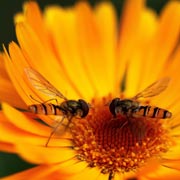 Suttons and other seed suppliers even offer whole ranges of bee-friendly flower seeds just for children. These include a ‘Bug Magnet’ flower seed kit for kids containing Calendula daisy seeds, 8 bug stickers and even a magnifying glass for closer inspection of the visiting bees, butterflies and insects. The price of that example is only £2.49 (price correct at time of writing — even cheaper if you’re a member). Sainsbury’s offers something completely different with their Bee-Friendly Flower Bomb Kits for little ones. Timing of this post is perfect too, as all these seeds can be sown during March, April and May, with flowers appearing anywhere from March to the end of September.
Suttons and other seed suppliers even offer whole ranges of bee-friendly flower seeds just for children. These include a ‘Bug Magnet’ flower seed kit for kids containing Calendula daisy seeds, 8 bug stickers and even a magnifying glass for closer inspection of the visiting bees, butterflies and insects. The price of that example is only £2.49 (price correct at time of writing — even cheaper if you’re a member). Sainsbury’s offers something completely different with their Bee-Friendly Flower Bomb Kits for little ones. Timing of this post is perfect too, as all these seeds can be sown during March, April and May, with flowers appearing anywhere from March to the end of September.
Sowing the Seeds
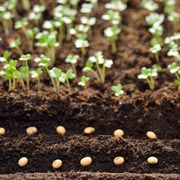 Commercially-supplied seeds will usually have instructions for sowing on the packets, so these can be followed easily. Generally speaking, though, there are a couple of main ways to sow flower seeds:
Commercially-supplied seeds will usually have instructions for sowing on the packets, so these can be followed easily. Generally speaking, though, there are a couple of main ways to sow flower seeds:
- The easiest way is for children to simply scatter seeds (spaced out according to individual instructions) onto some soft soil that’s been pre-prepared so it’s free of weeds. That might be, for example, in a flower bed, window box or in flower pots. The seeds can then be covered by a thin covering of sieved soil or compost and then slightly firmed down.
- Alternatively, children can sow the seeds in seed trays, flower pots, used yoghurt or margarine cartons or similar,
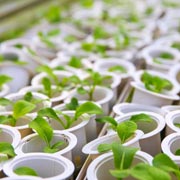 so long as whatever they use has drainage holes at the bottom (adults may need to supervise that part, for safety reasons). Drip trays will be needed underneath if this part is initially housed indoors. The earth used can be soil brought in from the outdoors or, of course, compost (suitable for seedlings and ideally peat-free as it’s better for the planet). Using this approach instead of the outdoor scattering approach will allow children to manually space out individual seeds more easily, once they’ve actually sprouted.
so long as whatever they use has drainage holes at the bottom (adults may need to supervise that part, for safety reasons). Drip trays will be needed underneath if this part is initially housed indoors. The earth used can be soil brought in from the outdoors or, of course, compost (suitable for seedlings and ideally peat-free as it’s better for the planet). Using this approach instead of the outdoor scattering approach will allow children to manually space out individual seeds more easily, once they’ve actually sprouted.
Either way, the soil should be kept moist over coming days/weeks, so children should check on progress daily.
Safety Notice
Read the seed packet because some seeds can be poisonous. Therefore, this activity should be undertaken only with the close supervision of a responsible adult. Children will need to be closely monitored when handling seeds and earth, and will need to take appropriate safety precautions, for example keeping hands away from the mouth and eyes and washing their hands with soap and water afterwards.
Along with regular watering, a suitable organic liquid feed will help to bring on some types of seedlings. However, as some liquid feeds can be poisonous, handling of it is best left to a supervising adult.
 After about ten days to two weeks or so, seedlings should start to appear through the soil. Once they start to grow significantly, it may be necessary for children to ‘thin’ some of them out, by transplanting any that are cramped, so there’s only one plant every few inches. This will allow each plant to grow to a significant size in the coming weeks, free of overcrowding.
After about ten days to two weeks or so, seedlings should start to appear through the soil. Once they start to grow significantly, it may be necessary for children to ‘thin’ some of them out, by transplanting any that are cramped, so there’s only one plant every few inches. This will allow each plant to grow to a significant size in the coming weeks, free of overcrowding.
Once they’re mature, flowers should begin to appear and then it all starts to look rather beautiful. It may even be fragrant, depending on the plants chosen.
Along Come the Bees, Butterflies & More
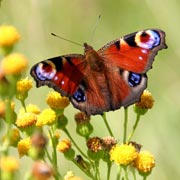 Once flowers are coming through, many types of delightful pollinators will soon follow. These are likely to include various types of bee, different kinds of butterfly, hover flies, ladybirds and potentially many other pollinators.
Once flowers are coming through, many types of delightful pollinators will soon follow. These are likely to include various types of bee, different kinds of butterfly, hover flies, ladybirds and potentially many other pollinators.
Children Learn from Nature
Children can then have educational fun taking a closer (but careful) look at the visiting creatures and perhaps even saying ‘hello’. Actually, it’s not a bad idea to encourage children to greet the visiting pollinators in this way because it demonstrates to children that each is a little being that deserves to live safely and be given space, peace and respect. Teaching children to recognise even the smallest creatures as individuals may also help to reduce the chances of children being fearful of them. 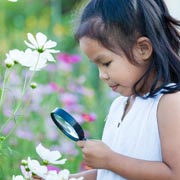 After all, little pollinators are generally very harmless, hard-working creatures who just want to go about their business in peace. They are, though, completely charming when you take the time to watch them and this is too easily missed by children if they’re glued to screens or kept indoors too much. Given the opportunity, children learn and benefit so much from nature, so this activity is very worthwhile one for under-fives and, indeed, for children of any age. Learning from/about nature also supports the ‘Understanding the World‘ aspect of the EYFS curriculum, which is so incredibly important to under-fives.
After all, little pollinators are generally very harmless, hard-working creatures who just want to go about their business in peace. They are, though, completely charming when you take the time to watch them and this is too easily missed by children if they’re glued to screens or kept indoors too much. Given the opportunity, children learn and benefit so much from nature, so this activity is very worthwhile one for under-fives and, indeed, for children of any age. Learning from/about nature also supports the ‘Understanding the World‘ aspect of the EYFS curriculum, which is so incredibly important to under-fives.
Looking for the Best Childcare Service in Willesden, NW10?
Or the best nursery or pre-school in Harlesden, Willesden or Kensal Green?
 Today’s guide was brought to you by Treetops Nursery, one of the best nurseries and pre-schools in the Willesden, Willesden Green, Kensal Green, Harlesden and NW10 areas of London. We’re independently rated by Ofsted as a Good early years provider in every category, so you know your baby, toddler or preschooler will be well looked after — and indeed will absolutely thrive — at Treetops Nursery. To register a place for your child, request a visit, ask a question or to find out more, please get in touch:
Today’s guide was brought to you by Treetops Nursery, one of the best nurseries and pre-schools in the Willesden, Willesden Green, Kensal Green, Harlesden and NW10 areas of London. We’re independently rated by Ofsted as a Good early years provider in every category, so you know your baby, toddler or preschooler will be well looked after — and indeed will absolutely thrive — at Treetops Nursery. To register a place for your child, request a visit, ask a question or to find out more, please get in touch:
Next Time:
Next time, we’ll publish a wonderful guide to bird feeders that children can make at home.

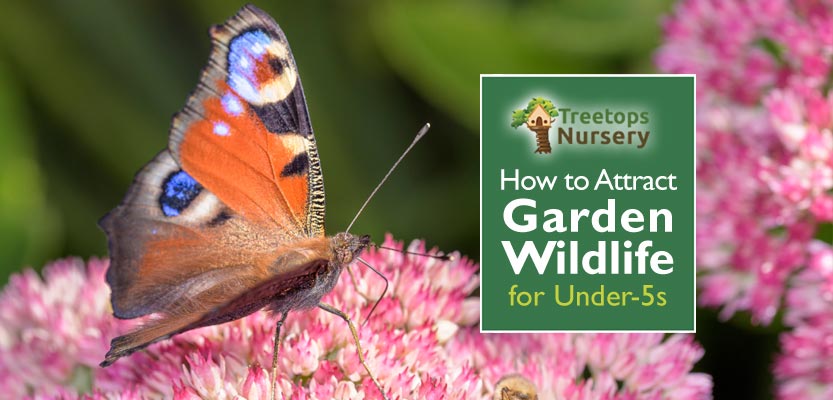
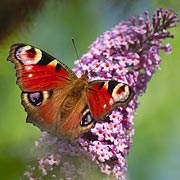 The little creatures that nature provides are some of the most wonderful, magical things that both fascinate and educate young children. Nature is a wondrous thing, when you think about it. All the little beings and characters that crawl or dart around any wildlife-friendly garden will enrich both the garden and any onlooker. What’s more exposure to
The little creatures that nature provides are some of the most wonderful, magical things that both fascinate and educate young children. Nature is a wondrous thing, when you think about it. All the little beings and characters that crawl or dart around any wildlife-friendly garden will enrich both the garden and any onlooker. What’s more exposure to 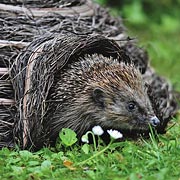 Hedgehogs also love piles of leaves, so long as they’re left undisturbed and are somewhere peaceful and safe. Therefore, a pile of them under a secluded bush or underneath a shed may prove popular with them. Children can also make hedgehog hotels — or buy commercially available ones from a garden nursery or online. It’s essential that hedgehogs are able to get into the garden in the first place, though. Therefore, there needs to be a space somewhere to get in, e.g. under a garden gate and/or under one or more parts of the fence around the garden. If there are no gaps, then there is no point in putting out a hedgehog hotel.
Hedgehogs also love piles of leaves, so long as they’re left undisturbed and are somewhere peaceful and safe. Therefore, a pile of them under a secluded bush or underneath a shed may prove popular with them. Children can also make hedgehog hotels — or buy commercially available ones from a garden nursery or online. It’s essential that hedgehogs are able to get into the garden in the first place, though. Therefore, there needs to be a space somewhere to get in, e.g. under a garden gate and/or under one or more parts of the fence around the garden. If there are no gaps, then there is no point in putting out a hedgehog hotel.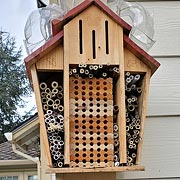 If children have no garden, simply attach an insect house (also known as a bug hotel) to any external wall. Alternatively, stand it firmly out of harm’s way, preferably somewhere peaceful, undisturbed and out of direct sun for most of the day. Simple insect houses and more complex bug hotels can be bought inexpensively online or from garden centres. They can also be home-made using chopped-up lengths of bamboo (or similar hollow sticks) bundled together with string. Children will need supervision for such an activity, of course, for safety. After a few weeks, children may notice that some of the hollow ‘tunnels’ are obstructed and this is likely to be insects, including solitary bees, ladybirds and some fancy types of solitary wasp, who have moved in or filled the hollow cores with pollen or nectar. They may seal entrances to overwinter or to protect eggs laid inside.
If children have no garden, simply attach an insect house (also known as a bug hotel) to any external wall. Alternatively, stand it firmly out of harm’s way, preferably somewhere peaceful, undisturbed and out of direct sun for most of the day. Simple insect houses and more complex bug hotels can be bought inexpensively online or from garden centres. They can also be home-made using chopped-up lengths of bamboo (or similar hollow sticks) bundled together with string. Children will need supervision for such an activity, of course, for safety. After a few weeks, children may notice that some of the hollow ‘tunnels’ are obstructed and this is likely to be insects, including solitary bees, ladybirds and some fancy types of solitary wasp, who have moved in or filled the hollow cores with pollen or nectar. They may seal entrances to overwinter or to protect eggs laid inside.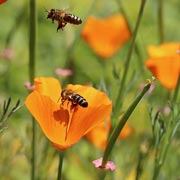 Flowers, and the nectar they provide, are irresistible to flying insects like wonderful bees, butterflies, hover flies and ladybirds. Many different flower types will attract such creatures and create a real buzz in the resulting flowerbed. We’ll write a separate post in due course about the types of flower that children can grow, perhaps from seed. Poppies are just one example to get children started, though. However, suffice it to say, if children grow any types of flowers, adorable creatures are likely to visit and bring real life to the garden.
Flowers, and the nectar they provide, are irresistible to flying insects like wonderful bees, butterflies, hover flies and ladybirds. Many different flower types will attract such creatures and create a real buzz in the resulting flowerbed. We’ll write a separate post in due course about the types of flower that children can grow, perhaps from seed. Poppies are just one example to get children started, though. However, suffice it to say, if children grow any types of flowers, adorable creatures are likely to visit and bring real life to the garden.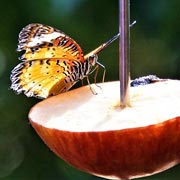 Similarly, butterflies and moths will enjoy a drink. However, in their case, they like some sugar dissolved into the water (a 50/50 mix is good, so the water may need to be warm during the preparation stage). Once cold, the sugar solution should be drizzled over pieces of ripe fruit like apples or oranges, which can then be placed into shallow dishes or speared onto vertical sticks. These can then go into the garden, balcony or window box — anywhere so long as they’re alongside any insect-attracting flowers.
Similarly, butterflies and moths will enjoy a drink. However, in their case, they like some sugar dissolved into the water (a 50/50 mix is good, so the water may need to be warm during the preparation stage). Once cold, the sugar solution should be drizzled over pieces of ripe fruit like apples or oranges, which can then be placed into shallow dishes or speared onto vertical sticks. These can then go into the garden, balcony or window box — anywhere so long as they’re alongside any insect-attracting flowers.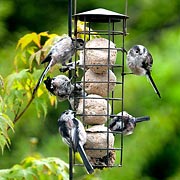 The cheese is a big hit with robins, blackbirds, pigeons, doves, sparrows and dunnocks, for example, but never use blue or mouldy cheese as it could harm them. These same bird types also love sunflower ‘hearts’, the inner kernel of sunflower seeds, which can be purchased inexpensively with the weekly shop from most supermarkets or, of course, online or from garden nurseries. ‘Robin Peanut Cakes’ by the National Trust (also available from Ocado) are also a massive hit in our own garden. Long-tailed tits, woodpeckers, starlings and nuthatches all adore such foods mentioned in this section. The seed can be sprinkled on the ground (little and often is best, so the food doesn’t go off, and somewhere safe away from hiding prey). Better still, for their safety, the bird food can be placed in bird feeders attached high up to windows, walls, sheds and fences.
The cheese is a big hit with robins, blackbirds, pigeons, doves, sparrows and dunnocks, for example, but never use blue or mouldy cheese as it could harm them. These same bird types also love sunflower ‘hearts’, the inner kernel of sunflower seeds, which can be purchased inexpensively with the weekly shop from most supermarkets or, of course, online or from garden nurseries. ‘Robin Peanut Cakes’ by the National Trust (also available from Ocado) are also a massive hit in our own garden. Long-tailed tits, woodpeckers, starlings and nuthatches all adore such foods mentioned in this section. The seed can be sprinkled on the ground (little and often is best, so the food doesn’t go off, and somewhere safe away from hiding prey). Better still, for their safety, the bird food can be placed in bird feeders attached high up to windows, walls, sheds and fences. 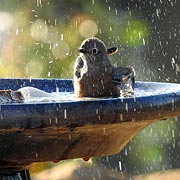 Or place on bird tables if you have them. Ideally, though, feeders should also be protected from attack from above, by birds of prey, so under a building overhang or overhanging tree branch would suit — not too near the ground either, otherwise cats are a potential threat. We’ll follow up in due course with a separate post showing children how to build and site home-made bird feeders — they’re easy, inexpensive and fun!
Or place on bird tables if you have them. Ideally, though, feeders should also be protected from attack from above, by birds of prey, so under a building overhang or overhanging tree branch would suit — not too near the ground either, otherwise cats are a potential threat. We’ll follow up in due course with a separate post showing children how to build and site home-made bird feeders — they’re easy, inexpensive and fun!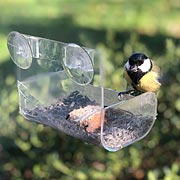 Making wildlife-friendly areas will enrich the lives of both the wildlife and children — and their families. Visiting birds, mammals, insects and mini-beasts can teach children so much educationally as well as encouraging a deep respect and empathy towards nature. They can help children grow their understanding of ecological issues and possibly even lean children towards greener lifestyles as they grow up. Witnessing local wildlife in the garden can also feed into children’s creativity, encouraging them to draw, paint, take photos, build things and so on. In time, many of the delightful little visitors may indeed become regular ones that become familiar, friendly faces that come to say hello daily if conditions are right.
Making wildlife-friendly areas will enrich the lives of both the wildlife and children — and their families. Visiting birds, mammals, insects and mini-beasts can teach children so much educationally as well as encouraging a deep respect and empathy towards nature. They can help children grow their understanding of ecological issues and possibly even lean children towards greener lifestyles as they grow up. Witnessing local wildlife in the garden can also feed into children’s creativity, encouraging them to draw, paint, take photos, build things and so on. In time, many of the delightful little visitors may indeed become regular ones that become familiar, friendly faces that come to say hello daily if conditions are right.